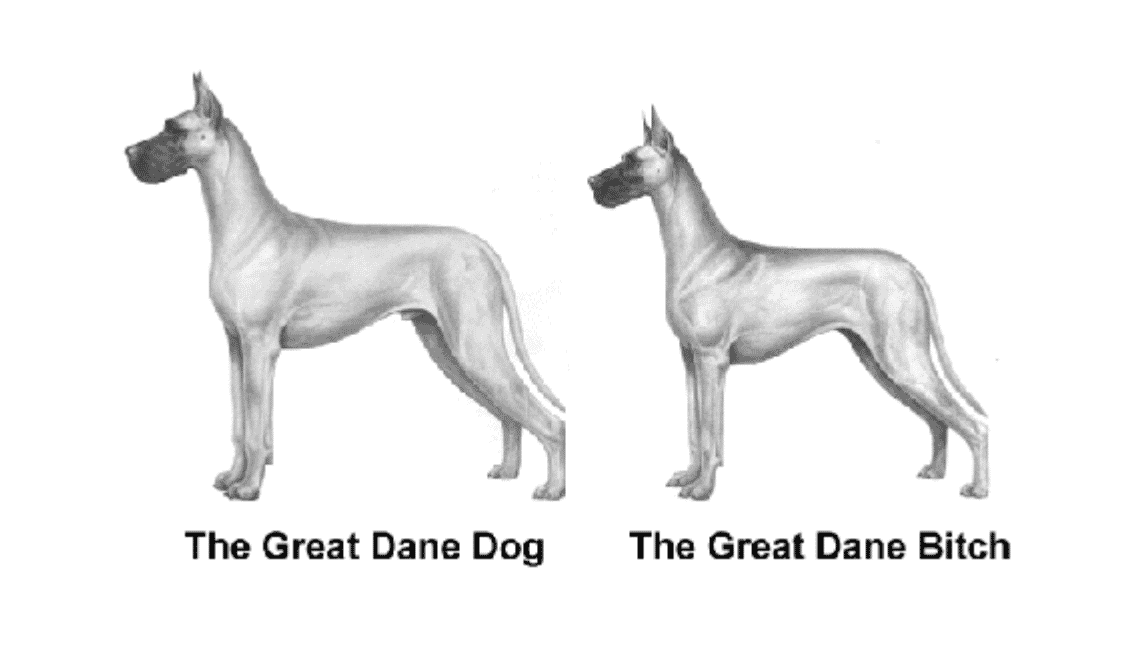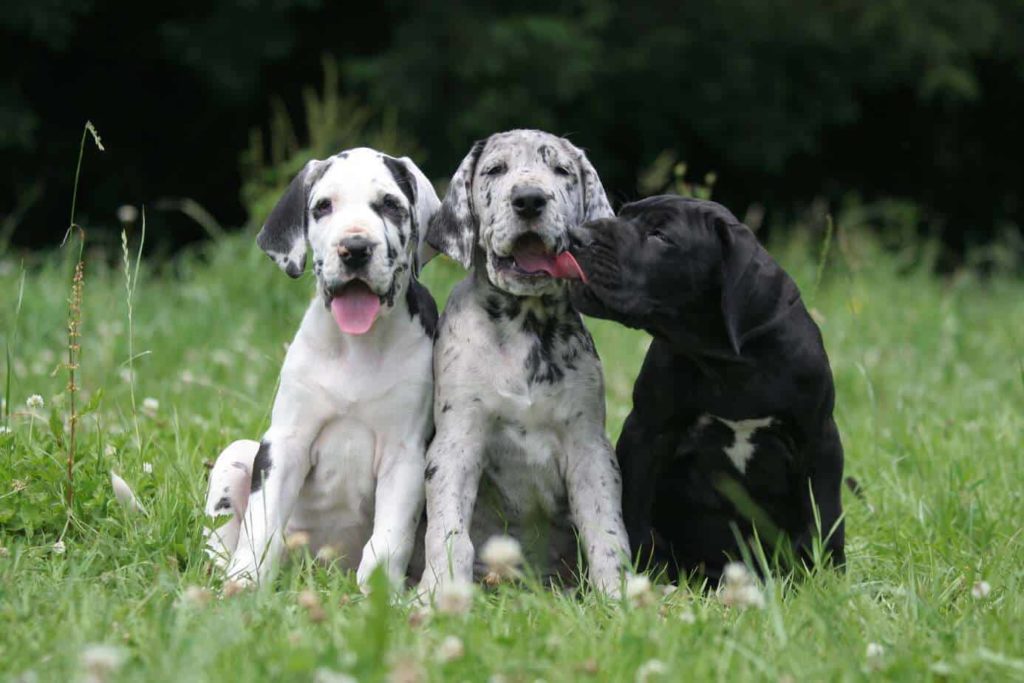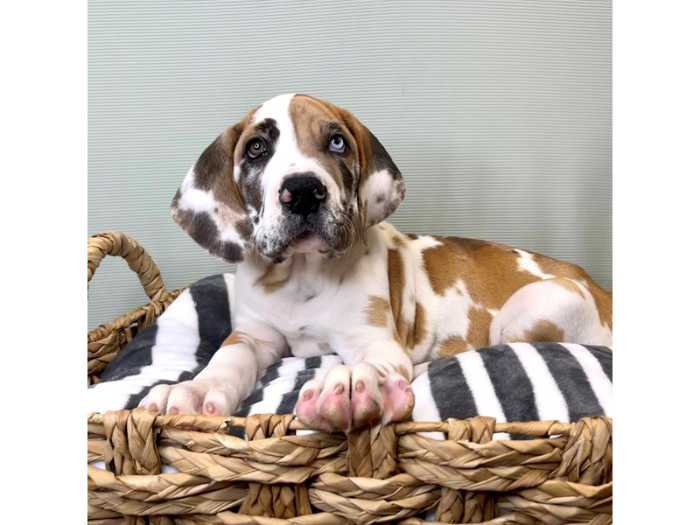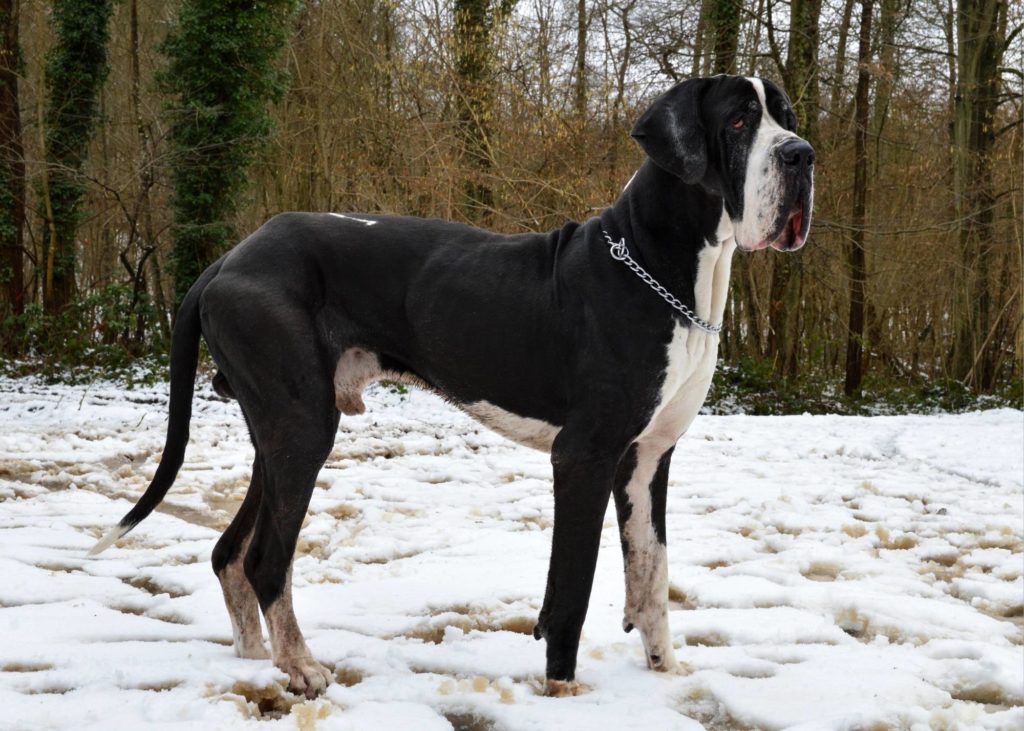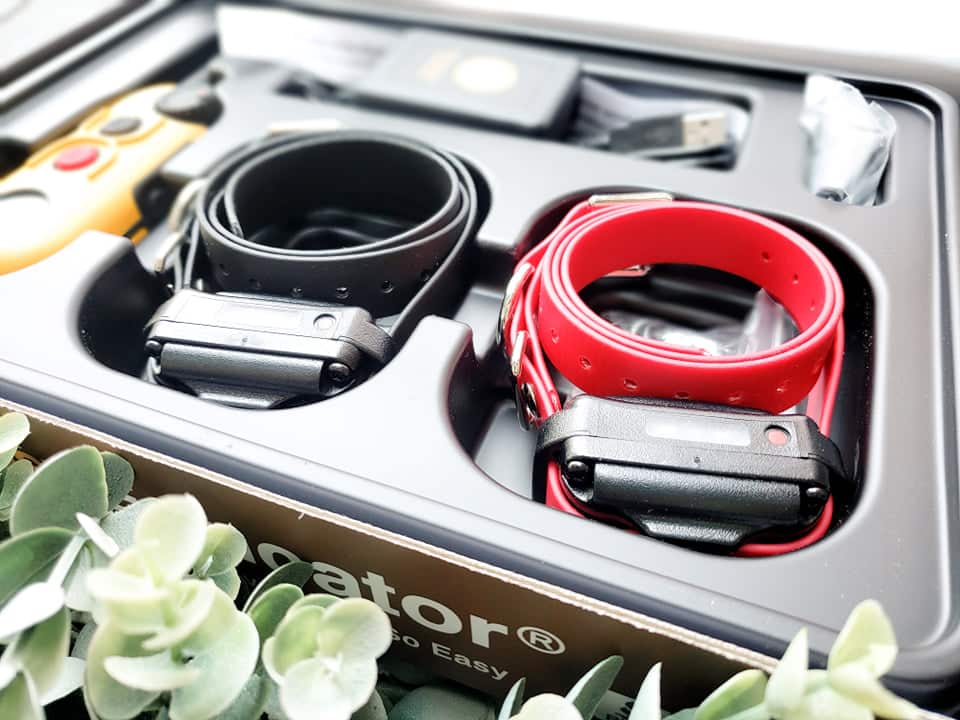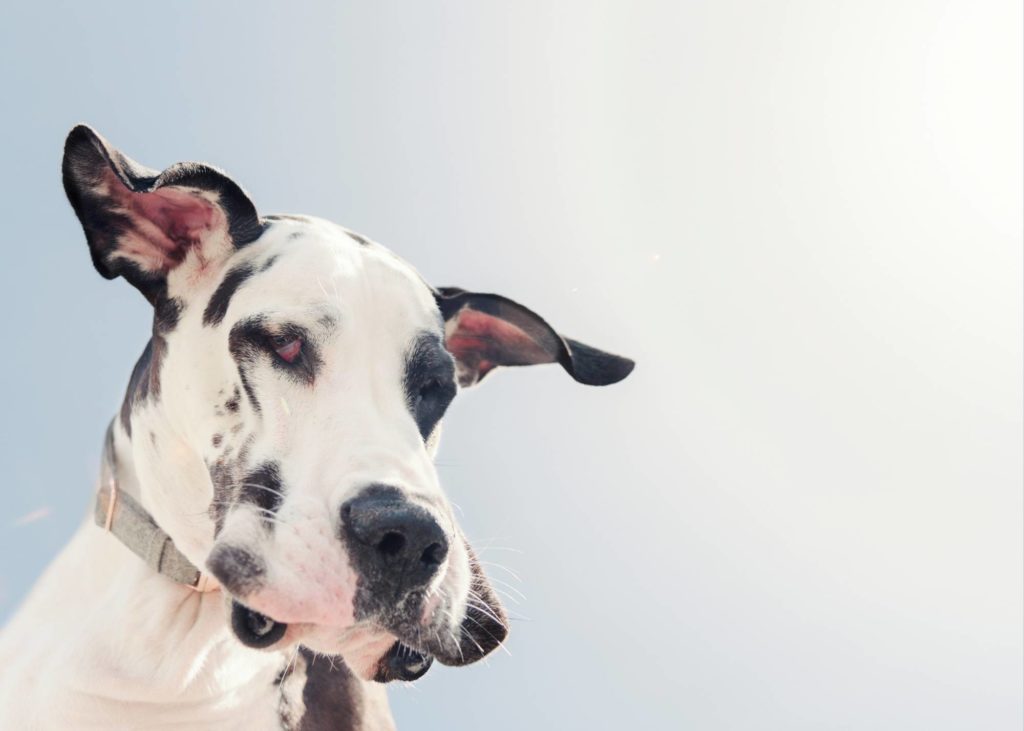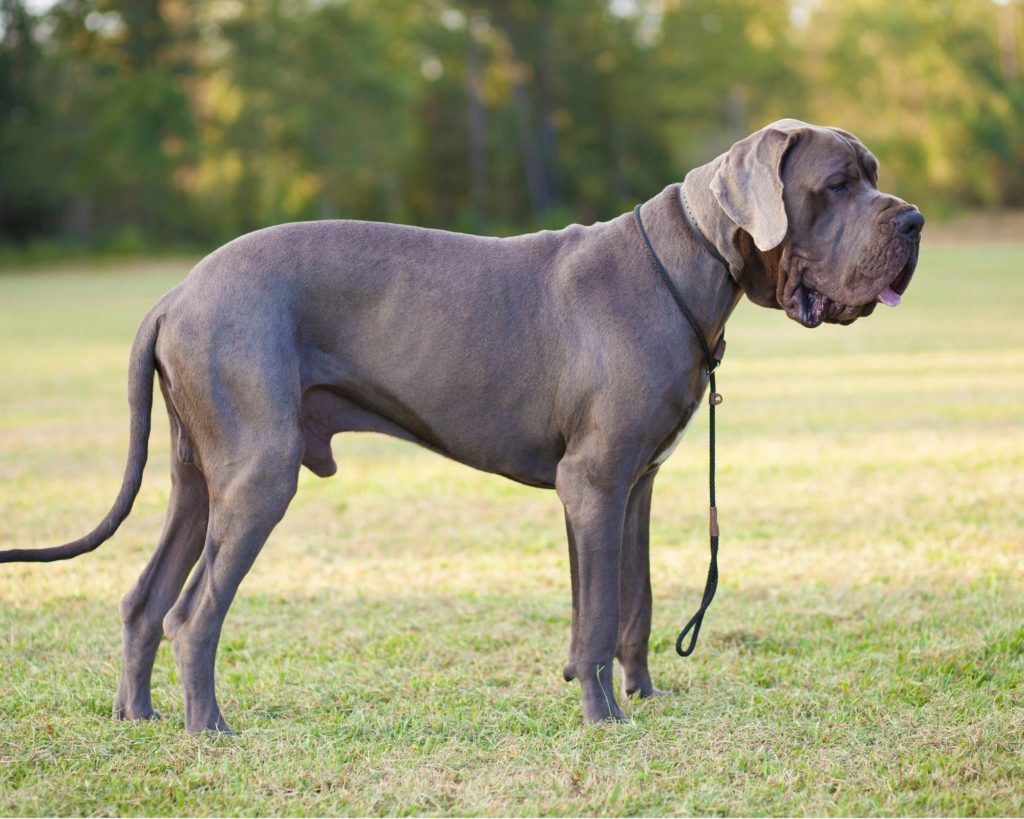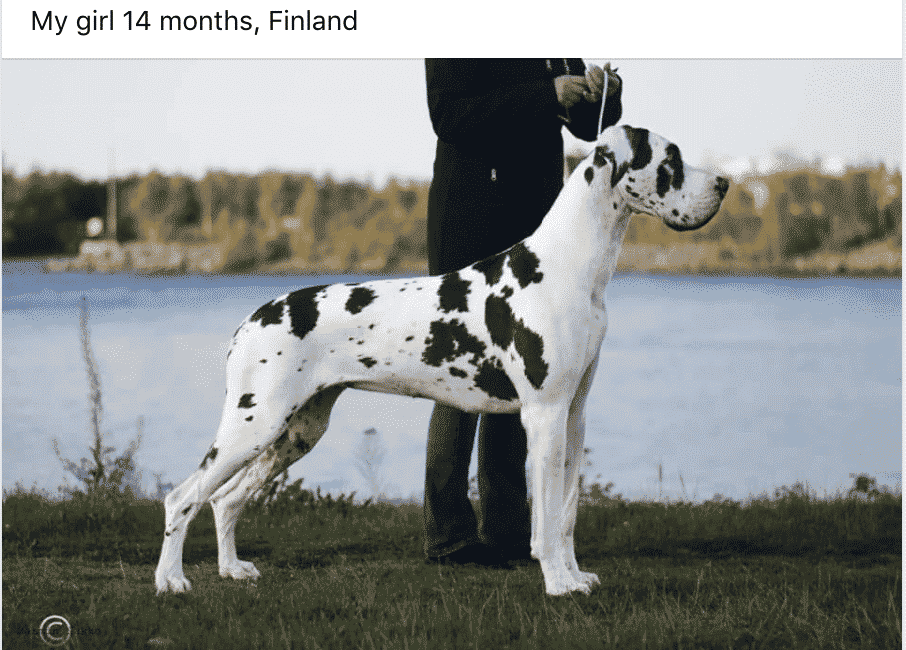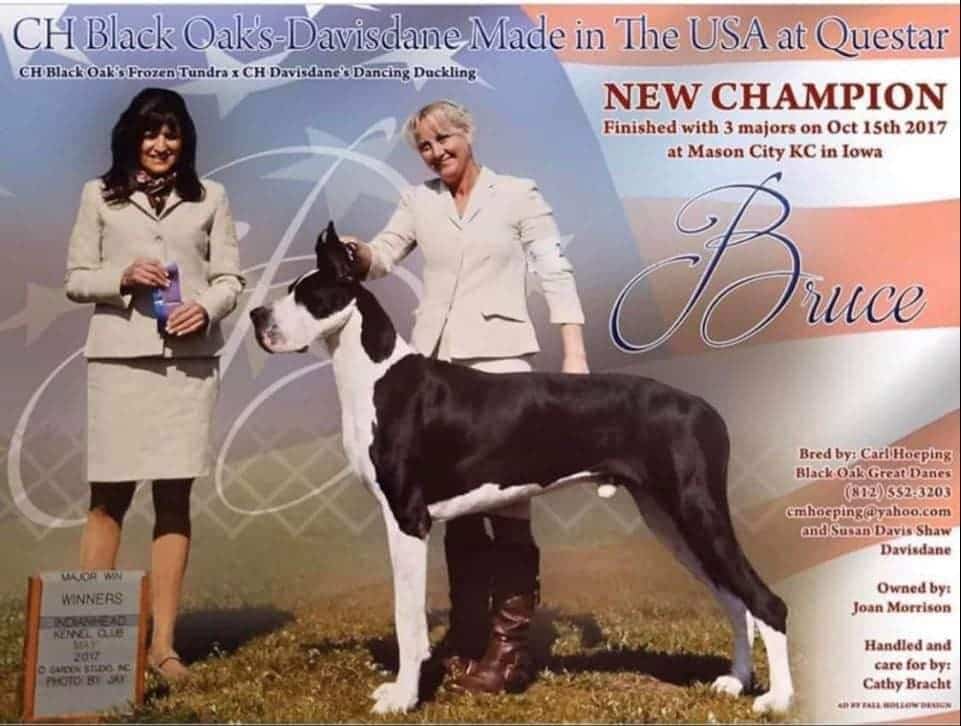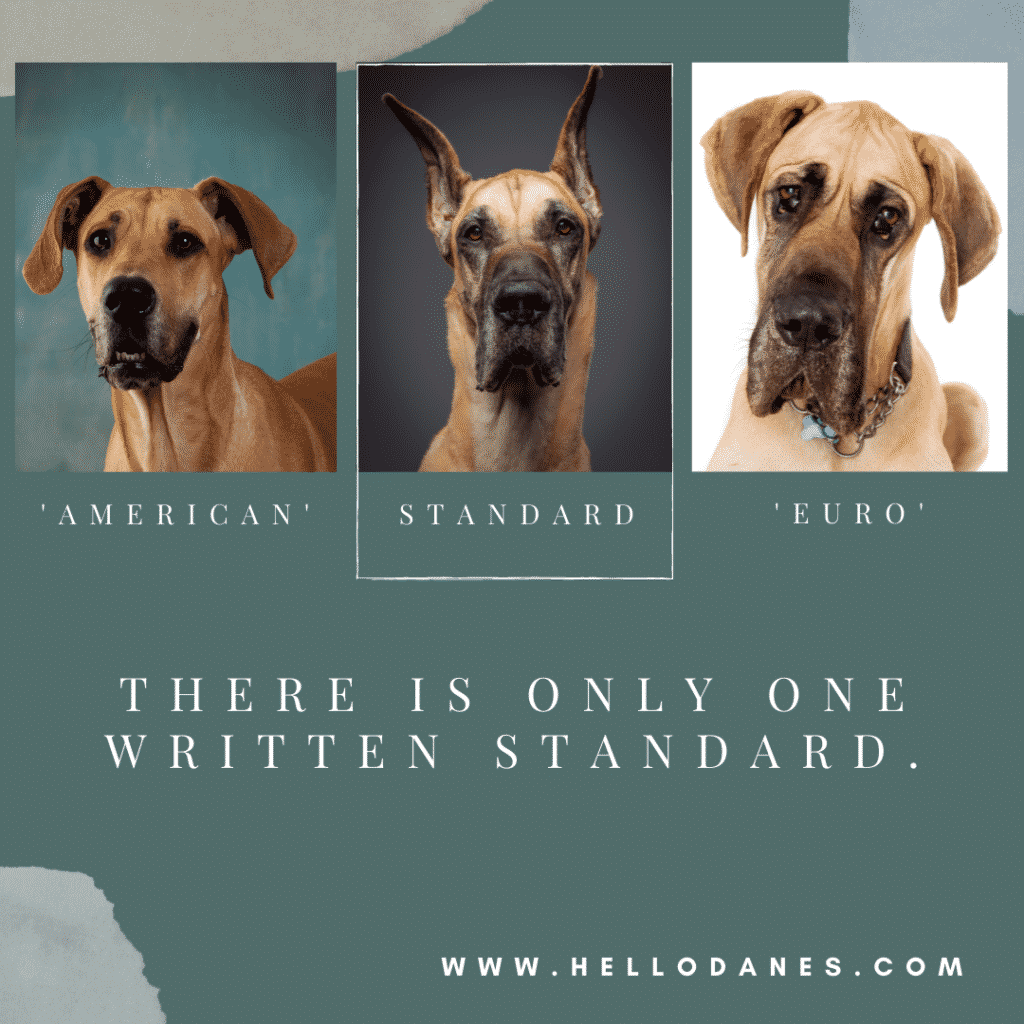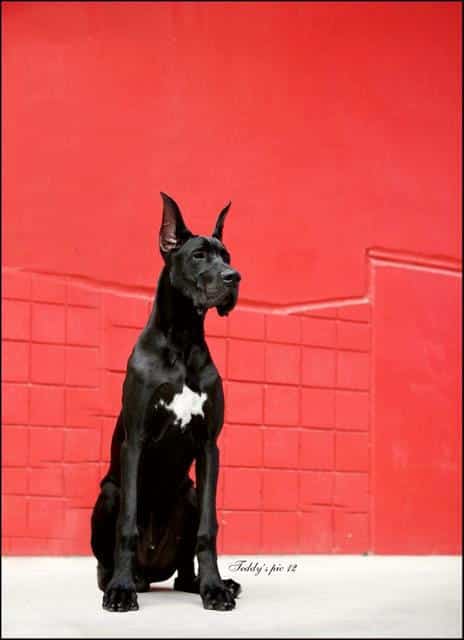The Great Dane is a breed of dog known for its GIANT size. Today we are discussing the Great Dane breed standard!
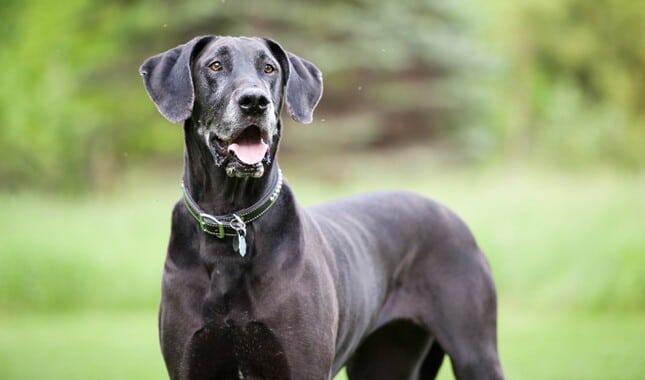
This standard is the official illustrated guide that outlines the breed structure, temperament, movement, and features. It was created to help owners, breeders, and judges identify the ideal Great Dane.
WHAT DOES THE GREAT DANE BREED STANDARD MEAN?
The Great Dane illustrated standard covers all aspects of the breed including:
- The history and origins of the Great Dane
- The physical features that make up the Great Dane Breed Standard
- The structure and movement of a well-built Great Dane
- The ideal temperament of the Great Dane
- The differences between a Dog (male) and a Bitch (female) Great Dane
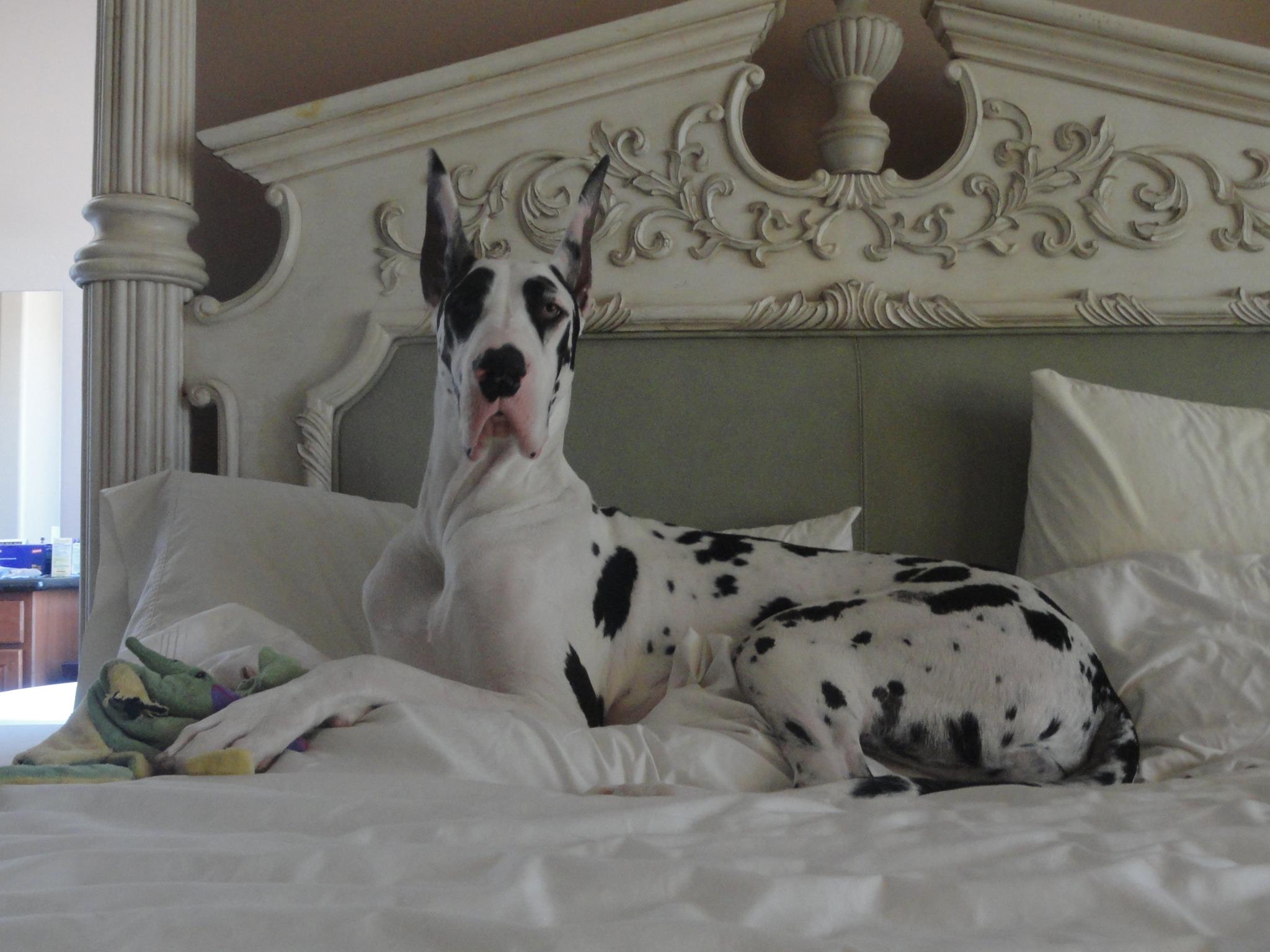
Why the Great Dane Breed Standard Matters
The Great Dane breed standard is important because it ensures that all Great Danes are bred to be the best they can be.
Breeders: Shady Business
Should I Choose a Breeder or Rescue?
Choosing a Dog From a Show Breeder
What Makes a Breeder Good?
When incorrect structure, health, and temperament find their way into a pedigree, it can be difficult to get rid of.
We all want healthy, robust, loving family dogs. By adhering to a breed standard, ethical breeders are able to create sound, beautiful, healthy dogs for years to come.
The standard covers everything from physical appearance to temperament and movement. Because Great Danes are so large, having proper structure is key.
When you see a Great Dane with a sway back, no angulation, droopy red haws (eyes), flat feet, or cow hocks you are looking at a Great Dane that was not bred with the written standard in mind.
What is OFA Health Testing?
Off Color and Designer Great Danes
White Great Danes
Obesity in Great Danes: Fat Danes Face Serious Health Risks
Euro Danes: A Big, Droopy Problem
What Does Euro Mean in Great Danes?
The Many Great Dane Spots, Colors, and Stripes
Miniature Great Danes: The Pocket Size Version
The written standard keeps the breed that we love healthy and strong!
Great Danes at Dog Shows
Dog shows are one way that breeders can share how they are intentionally and thoughtfully breeding dogs who meet the standard.
Close attention is paid to choosing parents who have excellent structure, movement, angles, and temperament.
Not all pets are show dogs, but all show dogs are pets!
Pat Trotter, BIS Judge 2021 Westminster Kennel Club
If you are interested in showing your Great Dane, you will need to find a reputable breeder who is knowledgeable about the breed standard and the general appearance of a thoughtfully bred Great Dane.
Unfortunately, many Great Danes are bred by breeders who are more focused on profits, designer color, or ‘EURO’ hyper types than they are on health, structure, and preservation of the breed. This can have a serious effect on the health of the dogs being bred.
Dogs from those breeders will not typically do well in dog shows, as they may have poor structure, unstable temperaments, and other significant faults that mean they don’t meet the written standard.
A good breeder will be able to help get you started on the right foot. They can provide guidance on nutrition, socialization, training, conformation handling, and more.
A breeder who shows their dogs is a breeder that is 110% dedicated not only to the breed but to the owners of the puppies they produce.
Not all puppies from a litter will be ‘show quality’, and will need to be placed in great pet homes.
Don’t be afraid to talk to a show breeder about purchasing a Great Dane puppy or getting into showing (and breeding) dogs yourself! These are the breeders who are at the top of the field.
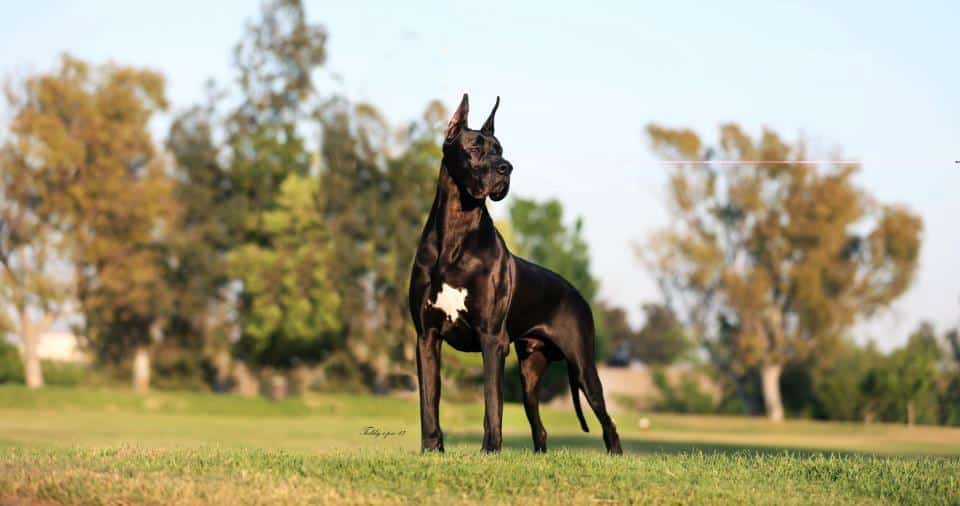
The Great Dane Head
One of the most striking features of the Great Dane is the head. Many people call the Dane head ‘brick on brick’, meaning that it should be angular and strong with a well-defined ‘STOP’ from the forehead to the bridge of the nose.
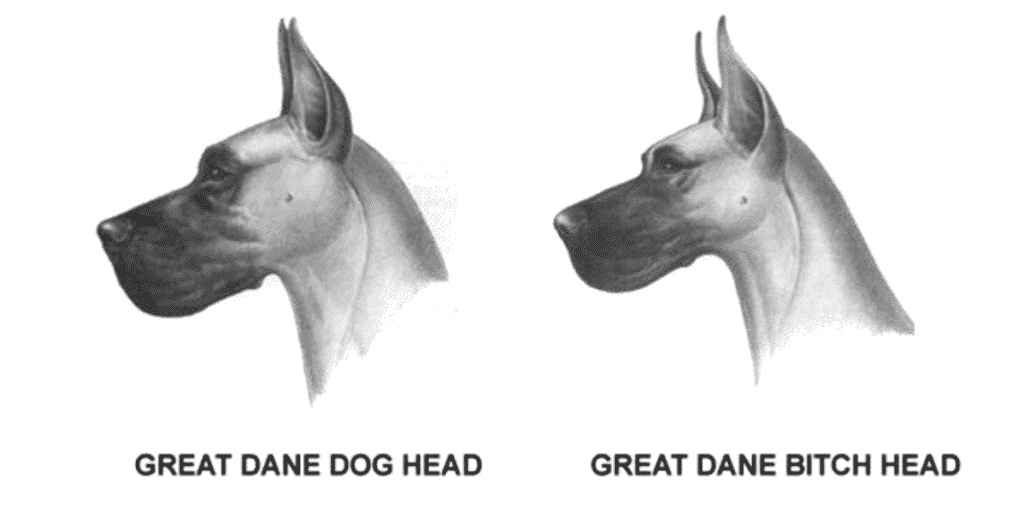
A round dome-shaped head, short muzzle, and/or excessive jowls are faults.
The ideal ratio of muzzle to the skull is 50/50. This is different from many other breeds, which often have longer muzzles.
Great Danes should have a strong jaw, with a complete scissor bite. This means that the top teeth should just barely touch the bottom teeth when the mouth is closed.
The eyes of a Great Dane should be large and dark, with an almond shape. They should be fairly deep-set well into the skull and give the dog an intelligent and alert expression. Some colors may have lighter eyes, however, most will have amber-colored eyes.
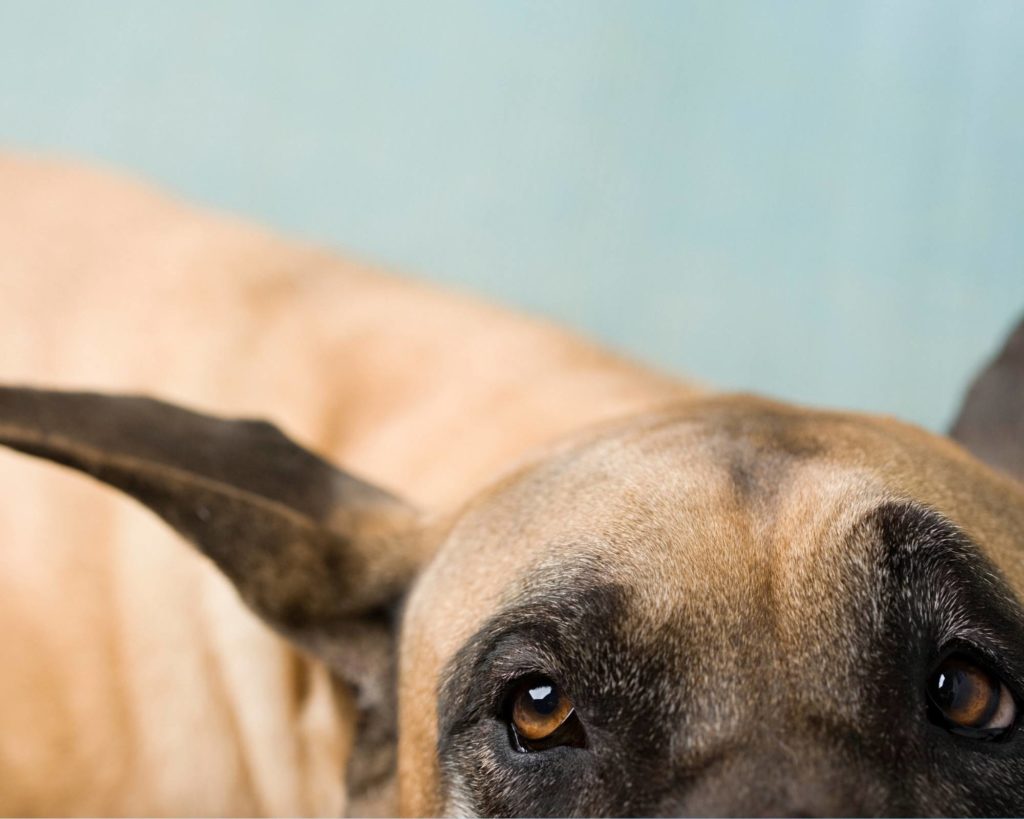
The ears of a Great Dane can be either cropped or left natural. If they are cropped, they should be done so at an early age, before the cartilage has set.
The natural ears should be medium in size and set high on the head. They should be triangular in shape, and taper to a point.
When natural, the ears should be soft and hang close to the head. When cropped, they should be erect and point forward.
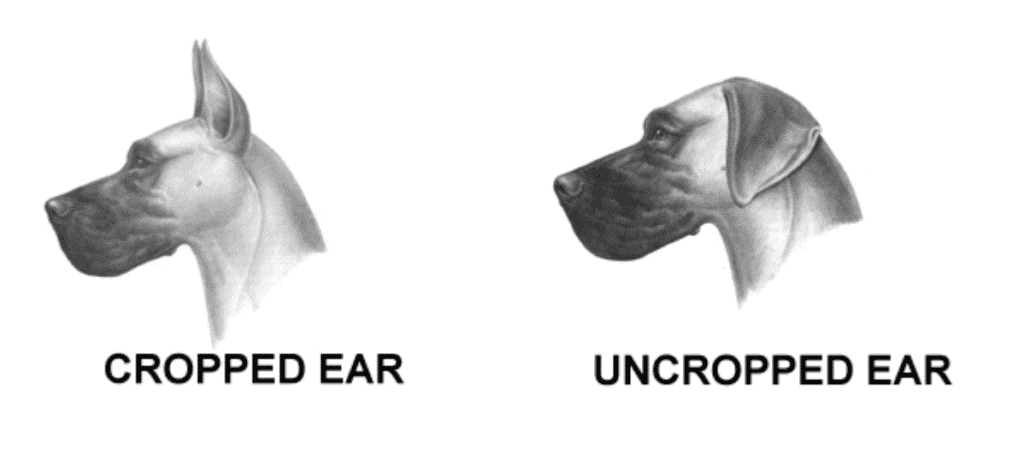
The neck of a Great Dane should be thick and muscular, without being excessively long. It should taper slightly from the shoulders to the skull.
Ear Cropping in Great Danes
Ear Cropping: The Two Sided Debate
How to Tape a Cropped Dane’s Ears
Ideal Structure for Great Danes
The body of a Great Dane should be long and rectangular. They should have well-sprung ribs and a deep chest. The top line should be level, with a slight rise over the loin.
The Dane’s underline should be slightly tucked up. This gives them the ‘waist’ that is characteristic of the breed. Great Danes are a lean breed that should never be stocky or bulky.
Great Danes should have well-angulated hindquarters.
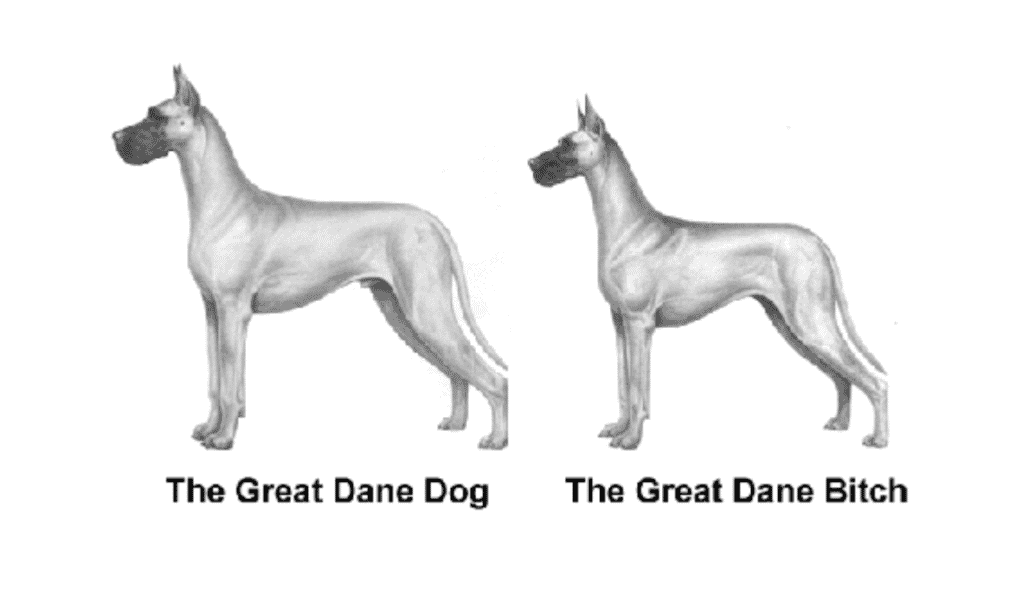
Danes should have round, firm cat feet. The toes should be well-arched and close together.
The nails should be short and dark on most colors, however light nails are acceptable on Harlequin, Mantle, and Merle Great Danes. Dewclaws are typically removed.
Danes should have a long, strong tail that is set high on the rump. When the dog is in motion, the tail should be carried level with the back, or slightly above.
A ‘hook’ tail or tail carried high above the back are faults.

Great Dane Size
Great Danes are a large breed, with a height range of 28-32 inches for males and 26-30 inches for females.
The weight range for Great Danes is 100-180 pounds for males and 80-140 pounds for females.
While these are the ideal heights and weights, many Danes will fall outside of that range.
Is My Puppy Too Skinny?
Great Dane Puppy Growth Chart
Which Crate is Best for the Size of a Great Dane?
Great Danes fed an incorrect diet, or overfed can become too tall or too large. This is bad for their orthopedic health and may also cause problems for their bones, heart, thyroid, or pancreas.
Danes should be kept lean with good muscle, and be fed an age-appropriate, highly-researched diet.
Great Dane Colors
There are seven recognized colors of Great Dane. Click on any heading to see the color in more detail!
Black. A black Great Dane should have a shiny, even black coat without any fading. The only acceptable white markings are on the chest and toes.
Blue. A blue Great Dane should have a pure steel-blue coat with no fading. The only acceptable white markings are on the chest and toes.
Merle. A merle Great Dane is just like a harlequin, but with a dark or light grey base coat. Torn black patches are scattered over the entire body. An ideal version of merle includes solid merle or the ‘mantle merle’ coat pattern. The white blaze is optional.
Fawn. A fawn Great Dane should have a stunning light golden coat and a black mask on the face. There should be no white markings.
Brindle. A brindle Great Dane should have a fawn coat with dark stripes all over, and a black mask on the face. Ideally, there are no white markings.
Harlequin. A harlequin Great Dane should have a white base coat with large black patches evenly distributed over the body. The ideal harlequin has as much white as possible, and the white collar is preferred.
Mantle. A mantle Great Dane should have a solid black blanket extending from the neck to the tail with a white chest, neck, blaze, and white-tipped black tail. The rest of the body should be either all black or predominately black with small amounts of white.
Great Danes do come in many, many other colors, however! Only a few are recognized and accepted by the breed club.
Some of the more unusual colors include lilac, blue fawn, fawnequin, brindlequin, blue harlequin, chocolate, and tan point.
For more information on the ethical breeding of Great Danes, and on designer colors, read here.
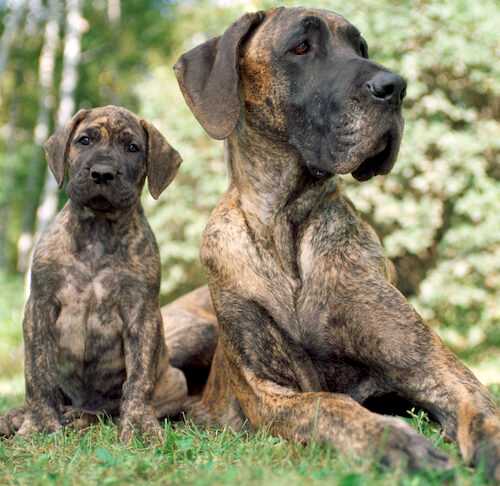
Ear Cropping in Great Danes
As mentioned before, Great Danes can have either cropped or natural ears.
The practice of cropping ears has been around for centuries. It was originally done as a utilitarian measure, to help protect the dog’s ears from being torn and shredded by wild boar during hunts. Great Danes were originally bred to hunt wild board!
Nowadays, ear cropping is done purely for cosmetic reasons.
The practice is controversial, and many countries have banned it outright. In the United States, it is still legal but must be performed by a licensed veterinarian.
When done by a highly qualified veterinarian with an excellent portfolio of cropping (showcasing talent and experience), the procedure is humane.
Ear Cropping: The Two Sided Debate
How to Tape a Cropped Dane’s Ears

American vs. Euro Great Danes
People believe that there are two types of Great Danes: American and Euro.
They believe that the American Dane is smaller and more refined, almost ‘greyhound like’ in their appearance.
They also believe that the ‘Euro’ Great Dane is stocky, beefy and droopy with a more ‘mastiff like’ appearance.
When comparing the written standard for Great Danes from both America and Europe, the dogs should be nearly identical.
‘American’ and ‘Euro’ are essentially made up terms.
There is only one Great Dane breed, in other words. A Great Dane that is either too refined (‘American’) or too exaggerated (‘Euro’) is a Great Dane that was bred outside of the written standard.
What Does Euro Mean in Great Danes?
Miniature Great Danes: The Pocket Size Version
One Big Droopy Eyed Dog: Eyelid Ectropion in a Dog’s Eye
How to choose a Great Dane Breeder
When looking for a Great Dane breeder, it is important to find one that adheres to the breed standard. This can help ensure that your Great Dane puppy comes from genetics that have been proven for structure and temperament.
For ethical reasons, it is important that we are only breeding well-structured Great Danes! Poor structure leads to orthopedic break down including wobblers, pain, arthritis and injuries.
Temperament is genetic!
A Great Dane that meets the breed standard for temperament will be confident, friendly and courageous. Not timid or fearful.
Aggressive and fearful behavior has genetic roots. Your breeder should be proving that they are creating sound, stable dogs that enjoy activities, people and socialization.
A well-bred Great Dane will be easy to train, friendly, calm and ready for anything.
It’s a myth that Great Danes are timid and fearful!
One way that you can ensure you’ve chosen an ethical breeder is to ask them if they do ENS or Puppy Culture. These proven early-socialization practices take stable, well-bred puppies and turn them into excellent companions and family pets!
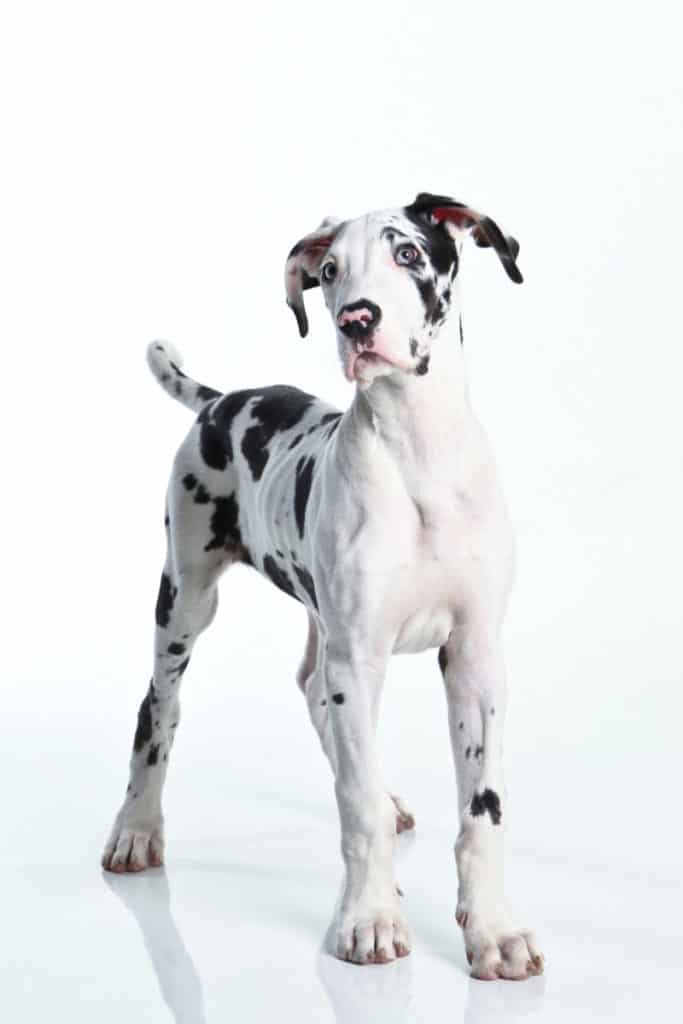
WHAT IS PUPPY CULTURE?
Titles & Certifications
Ask the breeder about titles. We recommend that in the pedigree that are titles for conformation, obedience, and/or sports. Former puppies may carry these titles, or the parents might as well (ideal).
These titles are earned at sanctioned AKC, FCI and Canadian Kennel Club events.
Common titles you might see include (but are not limited to):
CH. – Champion (conformation)
BIS – Best in Show (conformation)
CGC – Canine Good Citizen
THD – Therapy Dog
It’s important to note that ‘service dog’ is NOT a title or a legitimate certification.
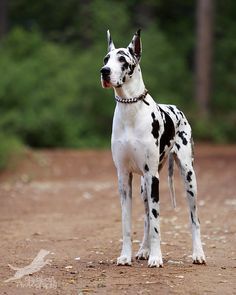
Health tests for Great Dane Breeding
A responsible and reputable breeder will be able to show you health clearances for both of the dog’s parents.
At minimum, the breeder must show proof that both dogs in the breed pairing have undergone (and passed) the following tests prior to breeding:
Eye exam with a board -certified veterinary ophthalmologist
Hip and elbow evaluation with the Orthopedic Foundation for Animals (OFA) or PennHIP
Cardiac evaluation by a board-certified veterinary cardiologist
A thyroid panel reviewed by a veterinarian
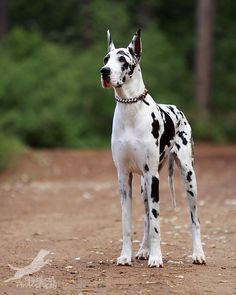
WHAT IS OFA HEALTH TESTING AND WHY IS IT IMPORTANT?
Learn about the tests your breeder MUST do before breeding ↗
Some breeders will take this a step further and also include the following:
A DNA test for von Willebrand’s disease
A DNA test for Degenerative Myelopathy.
A DNA test for color
A DNA test for bloat
A breeder who only does one or two of those tests is NOT reputable nor are they ethical, no matter how ‘friendly’ or ‘popular’ they seem.
Scam Breeders: What to Look For
Should I Choose a Breeder or Rescue?
Choosing a Dog From a Show Breeder
Great Dane Exercise
It’s a myth that Great Danes are fragile!
When they are correctly built and have robust, well-angled structure they are very athletic dogs that love to run, move and play.
Great Danes benefit the most from off-leash exercise, being allowed to freely explore varied terrain. We recommend that all Danes be reliably off-leash trained for this reason.
Walks on hard pavement are not ideal for the joints, nor do they do much to help build muscle and stamina. While there is nothing wrong with ‘walking your dog’, we highly recommend balancing regular walks with off-leash play.
Mature Great Danes should be lean and muscular, not bulky, lanky, unstable, or slow.
Puppies especially benefit from free play on varied outdoor terrain!
We do not recommend fetch, running or long leashed walks for puppies.
9 Tips to Having a Trained Great Dane with Balanced Training
Great Dane Health Conditions
Great Danes are prone to a number of health conditions, most of which are genetic, and all of which contribute to the so often ‘shorter lifespan’ seen in Great Danes.
Those conditions include but are not limited to:
Hip and elbow dysplasia
Cancer
Arthritis
Allergies
Autoimmune conditions.
A responsible breeder will have health clearances for their dogs as well as knowledge about how to avoid or minimize the impact of these disorders on the puppies they breed.
It’s also important to speak with your veterinarian about choosing an appropriate food for your Great Dane! There is a lot of misinformation being spread, and that information is unfortunately hurting our breed.
The Great Great Dane
Now that you’ve read about the Great Dane Breed Standard, everything you need to know, we hope you’ll consider this amazing breed when looking for your next furry family member!
If you have any questions that weren’t answered here, please reach out and we’ll be happy to help!
READ MORE:
HOW TO FIND THE BEST CRATE FOR A GREAT DANE
